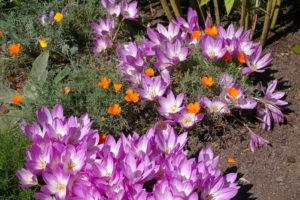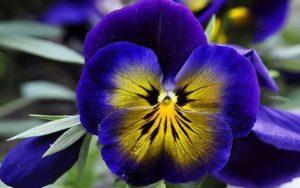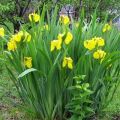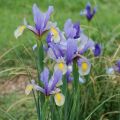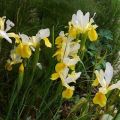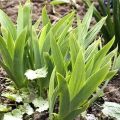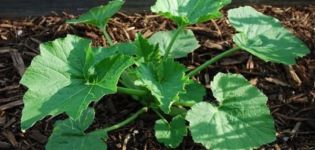Description of varieties of Siberian iris, planting and care in the open field
The presence of a flower bed implies the selection of plants suitable for growing. Hobby gardeners acquire crops that fit seamlessly into the garden design. Often, Siberian iris appears on the plots - an unpretentious and beautiful plant. There are no peculiarities in growing it, so the task is easy to cope with.
Description and features of Siberian iris
There are over 200 types of iris in total. They are conventionally divided into 2 types:
- bearded;
- beardless.
The Siberian representative of the family belongs to the second type. For a long time he was in the shadow of his fellows. But the gardeners turned their attention to him. And now he is a frequent visitor to the sites.
Siberian iris is a sophisticated and exquisite flower. The bushes are slightly smaller than other species, and the flowers themselves are small, but this is offset by their large number.
A 4-year-old plant produces up to 40 peduncles.
Depending on the variety, some irises open all flowers at the same time, some one at a time. This significantly extends the flowering time.
Plants are very hardy, adapted to the harsh climate, they are not afraid of cold winters and spring frosts.

The height of adult crops is from 0.4 to 1.6 m. Depending on the purpose of cultivation, a variety should be selected. Since some peduncles are located above the green mass, some are on a par. There are varieties whose flowers are located inside the plants. Consider this feature when choosing a landing site.
Popular varieties
During the existence of irises, summer residents have chosen for themselves the species that they fell in love with and effectively got used to the interior of the garden. The white Siberian representative of the family has been familiar to gardeners for a very long time. It has a persistent scent and tall flowers that are visible from every corner.
Pink irises are no less popular; they are used to decorate flower beds, borders, stone slides and much more.
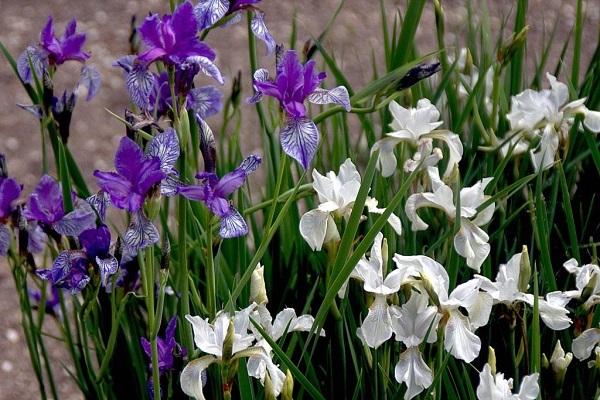
Harpswell haze
The peculiarity of the variety is its unpretentiousness and the ability to grow for a long time without transplanting. Iris flowers are pale lilac with a bluish tint. Dark stripes are clearly expressed on the lower leaves.
Altai leader
Bred by Russian breeders. Famous for its deep blue hue. On peduncles 2 flowers bloom at the same time. Popular names:
- bell;
- cockerel;
- iris.
One stem gives 3 to 6 peduncles.
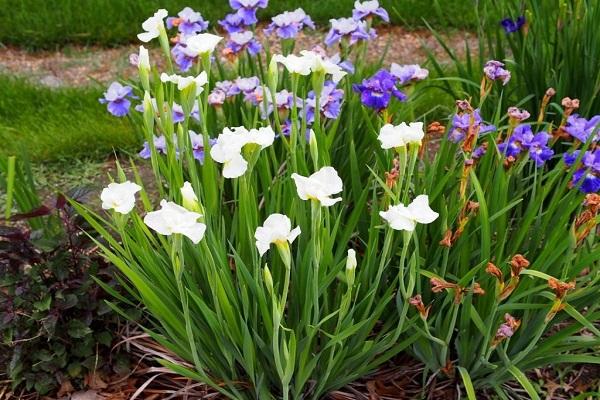
White swirl
The white flowers are slightly larger than those of other Siberian irises.One bush after a while grows on a plot of 1 m2... It does not require special care, under favorable growing conditions it blooms for a long time.
Hubbard
Maximum height 80 cm. The color of the flower is purple-violet. On the lower leaves at the base there is a spot of white or yellow color.

Reproduction of iris
A common way is to divide the rhizome. Gardeners use it most often. But there are other methods as well. Siberian iris is propagated by seeds or buds.
The division of the rhizome is done with a sharp knife. It is advisable to immediately treat the cut sites with a special preparation or wood ash. In one division, from 3 to 5 sheet rosettes are left.
Reproduction by buds is carried out by annual shoots. They have small tubercles-growths, these are the kidneys. Future rudiments of rhizomes are carefully separated from the main root and transplanted into pre-prepared holes.
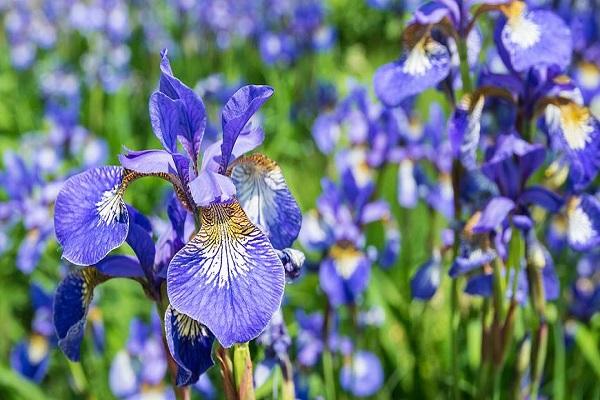
The cut sites are treated to avoid rotting or the ingress of viruses.
To propagate irises with seeds for the longest time. Before planting, the material is placed in the refrigerator for 2 weeks, after which it is kept in a warm room. The stratification is completed by planting seeds in the ground.
Planting rules
Compliance with planting requirements is not a whim of experienced gardeners. The correct procedure helps to get a blooming flower bed that will delight the eye of the owner of the site.
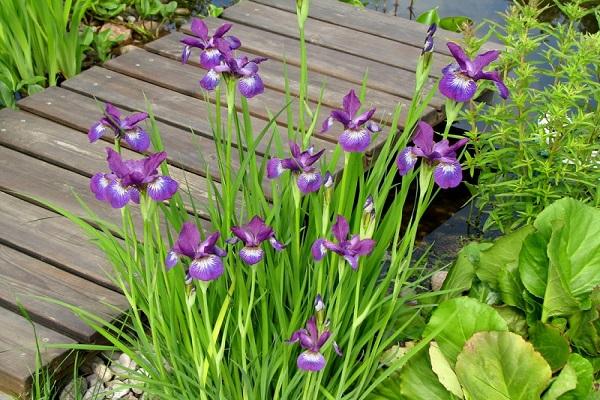
When is the best time to plant
Planting dates are determined by the gardener. It is advisable to plant in the fall. When the iris fades, the bush is divided into parts and planted in pre-prepared holes.
Some varieties are planted in spring or during the entire growing season. Most often, transplants are carried out from late summer to the first month of autumn. The plant tolerates stress better.
How to choose planting material
Pay attention to the appearance of rhizomes, suitable for planting:
- fresh, not wrinkled specimens;
- rhizomes that have no visible damage and defects.
If the roots are dry, they are still planted in holes and watered well, rhizomes form from the buds, and the plants begin to grow.
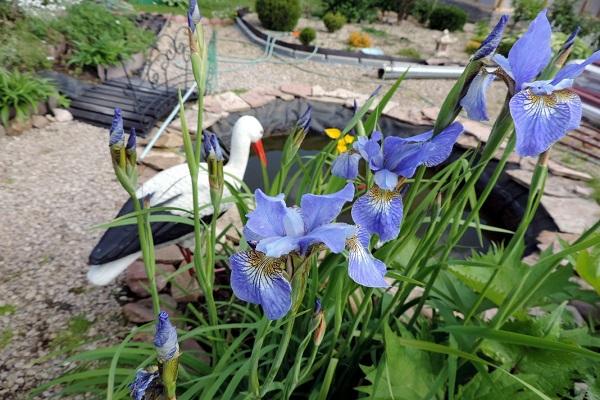
Site selection and preparation
Any irises love sunlight. When choosing a site, they choose well-lit places where the sun shines most of the day. If necessary, add coarse-grained river sand to the soil.
The soil preferred by flowers is light loamy. It is undesirable to plant in acidic, heavy and moist soils. Sour soil is diluted with lime or dolomite flour. If the soil is sandy, dilute it with clay and organic fertilizers.
Bedding
Planting irises outdoors must be done correctly. To do this, you must prepare the holes in advance. The distance between the bushes is 40-60 cm, depending on the variety.
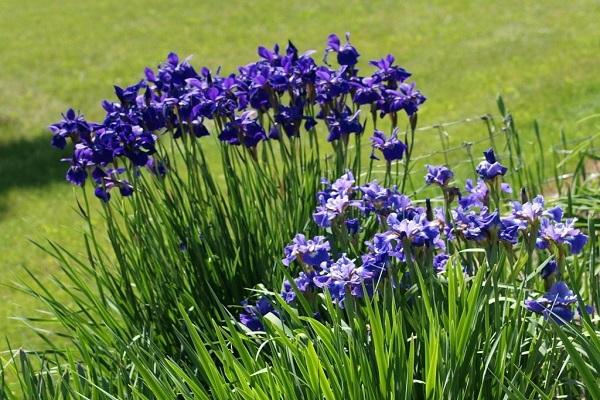
The rhizomes must not be deeply buried. Plants will be sick and will not bloom. It is advisable to cover it with a layer of soil 5 cm thick. After planting, the soil around is mulched, dry leaves or plant residues are used.
Siberian irises do not tolerate drought, at first they are often and abundantly watered. But excessive moisture damages the rhizomes. It is important to observe the measure.
Flower care
After planting, you need to carry out competent care. The duration and abundance of flowering depends on how correctly the subsequent actions will be performed.
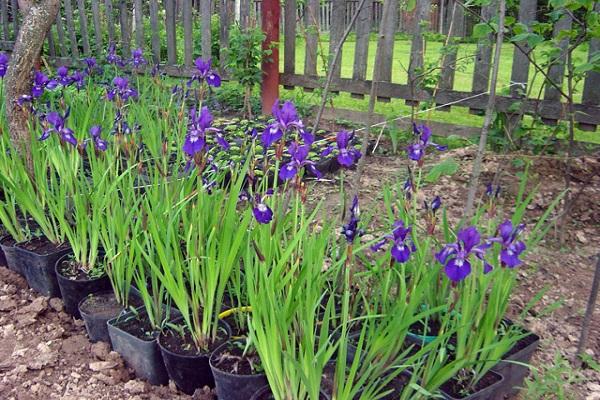
Watering
Plants need moisture for the first time. After transplanting, the bushes are often watered. But it is categorically impossible to fill in, the roots will rot, the plants will disappear.
In the future, watering is carried out as the top layer of the soil dries out. To preserve moisture in the soil, it is recommended to loosen the soil.
Mulching
After planting, the flower beds are mulched.This helps to retain more moisture in the soil, and the mulch also prevents weeds from growing. Therefore, the benefits of using it are great.
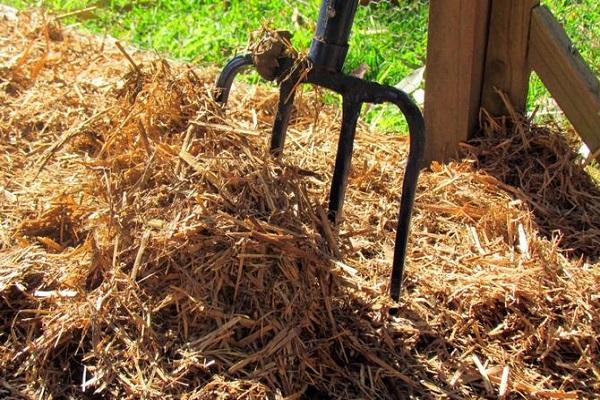
Top dressing
Fertilizers are applied 2 times per season. During bud formation and immediately after flowering. Often used:
- ammonium nitrate;
- potassium nitrate.
It is better not to fertilize with nitrogen, since an excess of the substance weakens the immunity of plants. Flowers become susceptible to disease.
Pruning
At the end of flowering, the peduncles are cut off. Then, when the leaves begin to dry in autumn, they are cut to a height of 15 cm.
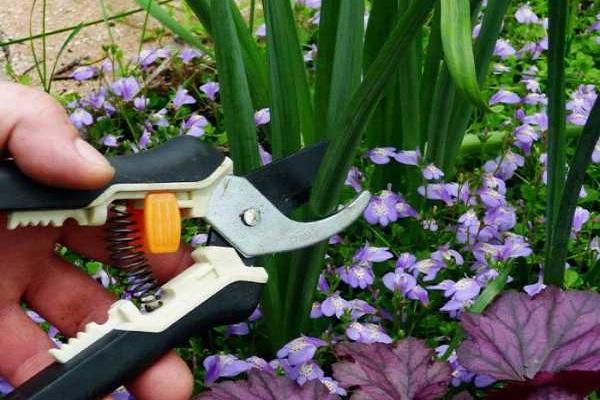
Transfer
The optimal period is August-September. The bushes are carefully dug out, divided into divisions with a sharp knife and seated in pre-prepared holes. They deepen slightly, slightly covering the roots with earth.
During the growing season, sometimes the roots appear above the surface of the earth; you do not need to sprinkle them in the summer.
Shelter of irises for the winter
Mostly Siberian irises are winter-hardy, but for safety reasons, many summer residents cover the rhizomes with a layer of mulch. Peat, plant residues, leaves and other handy material are used for wrapping.
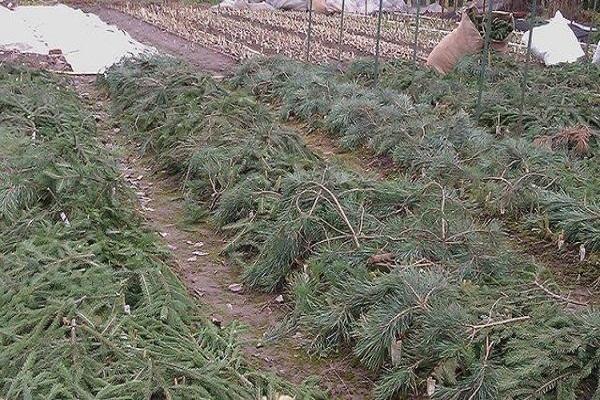
Plant diseases and pests
Against diseases and insects, irises are treated in advance. Even in the spring, they are sprayed with chemicals. Timely action will save you from plant death.
Adhering to farming and grooming requirements will also help protect the plants.
Use in garden design
Siberian irises feel great next to a reservoir. Therefore, they are used to create an aesthetic look near constructed ponds or rivers. Flowering plants, reflected in the water surface, increase the beauty of perception.

High varieties of irises are grown in the center of an island flower bed or to decorate the background of a mixborder.
Large rockeries combine planting of several types of plants. Summer residents harmoniously combine colors and create whole compositions from Siberian irises.
Flowers are often planted in groups, forming blooming islands on the lawn. They choose the same color schemes or different ones, depending on preferences and ideas.
Growing flowers will not give the gardener many problems. Unpretentious representatives of culture fit into the design and complement any site.
